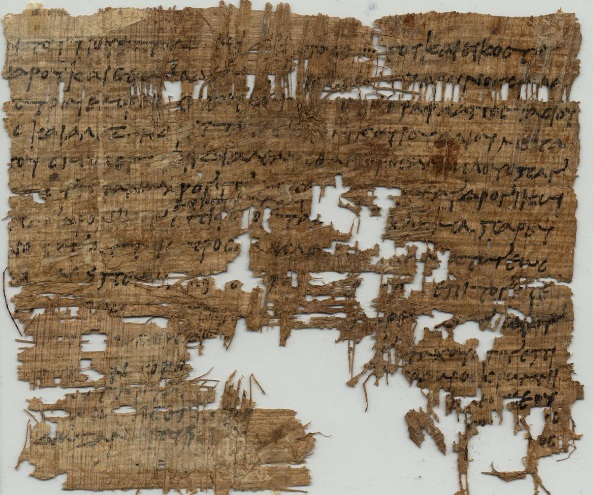
A fragment of papyrus from ancient Egypt, which once featured Greek letters, may be part of the world’s first book, pushing the origins of bookbinding back by centuries, according to researchers.
The 10-by-6-inch papyrus fragment, housed in the library of the University of Graz in Austria, has been found to be around four hundred years older than what was previously considered to be the earliest codices, making it the earliest known section of a book in existence today.
Discovering the ancient Egyptian papyrus was actually a book
The discovery that the papyrus fragment was in fact a book was made by Maltese conservator Theresa Zammit Lupi, who told the Times of Malta, “I really did just stumble upon it. That’s the word, you know, I wasn’t looking for anything like this at all.”
Zammit Lupi was reportedly assessing the condition of the university’s collection of fifty-two papyri to determine if they needed any conservation work or new storage. While admiring one particular papyrus fragment, the conservator noticed a knotted thread embedded deep in the layers of the item, which allegedly made her think there must be more to the artifact than was initially thought after its discovery in Egypt. The piece is dubbed the Graz Mummy Book.
“I said, ‘hey, hang on a second,’ and I flipped it around again. And then I saw it. This was the shape of a book. It was so evident and so clear,” Zammit Lupi told the Times of Malta, adding, “I called my colleague who was sitting opposite me and I said: Go have a look and then I looked at the catalogue and it said 260 BC.”
The #Graz #Mummy #Book (which now maybe the oldest book in the world) is a bifolio (folded leaf) from a notebook recording tax accounts for beer and oil in Greek around 260 BC.
Check out Is This the Oldest Book in the World? https://t.co/KaDjwPe86O via @finebooks
— StreetTalk (@StreetTalk12224) December 14, 2023
The conservator told the newspaper that she went through a period of shock, wondering if her thesis really stood and running through a long period of questioning to make sure what she was seeing was correct.
The history of the artifact
The papyrus, or book, was pushed through many forms in its lifetime in ancient Egypt. Unearthed along with hundreds of other pieces of papyrus at the site of El Hibeh in 1902, it began its life as a bound document dating back to 260 BC. The book was a record of taxation rates for beer and oil written in Greek letters using black ink.
The fragment was then removed from its binding and sent as a letter before going through another change of use. It was then painted with images, including one of a son of the falcon-headed god Horus, and employed as wrapping bandage for a mummy during the Ptolemaic period (304 BC – 30 BC).
With microscopic and multispectral imaging, Zammit Lupi and her team discovered more about how the book was first assembled.
A plain sheet of papyrus is folded into two, written on, and turned into a booklet, Zammit Lupi said, adding that the different biofolios, or single sheets folded in the center, were attached with tackets—flexible material used to join two objects together—similar to a modern-day binder.
The presence of a row of holes for the tackets, some with thread remnants still attached, along with the symmetrical ink transfer across the fold in the middle, confirmed the biofolio had been bound with an ancient codex.
The discovery within the papyrus from Egypt pushes the origins of bookbinding further back into the past by at least four hundred years. Previously, the oldest book in the world was thought to be from the first or second century AD.
See all the latest news from Greece and the world at Greekreporter.com. Contact our newsroom to report an update or send your story, photos and videos. Follow GR on Google News and subscribe here to our daily email!



